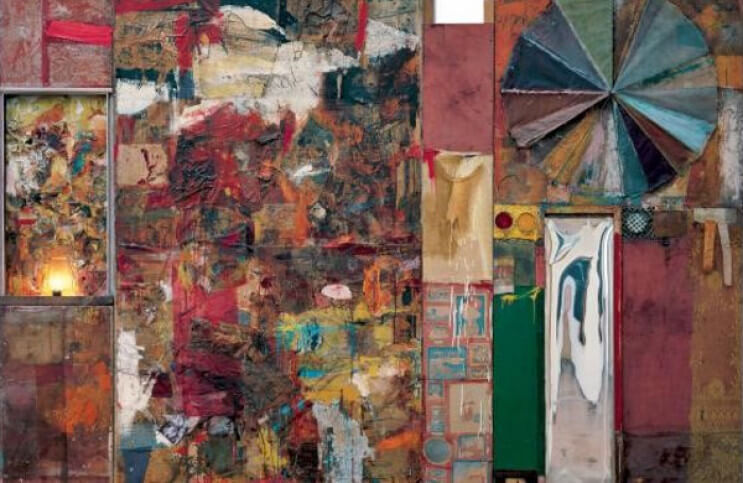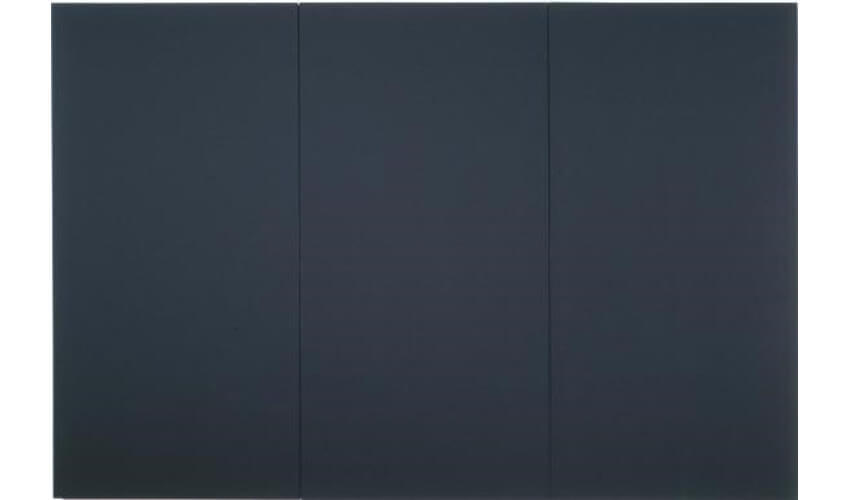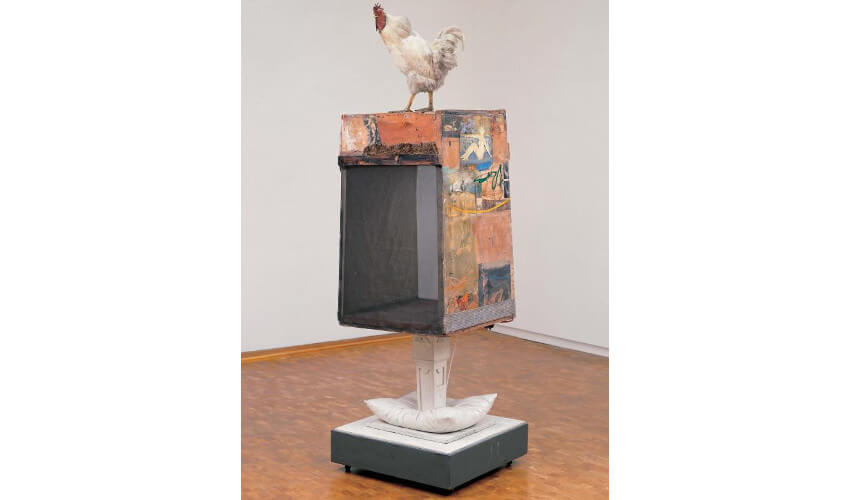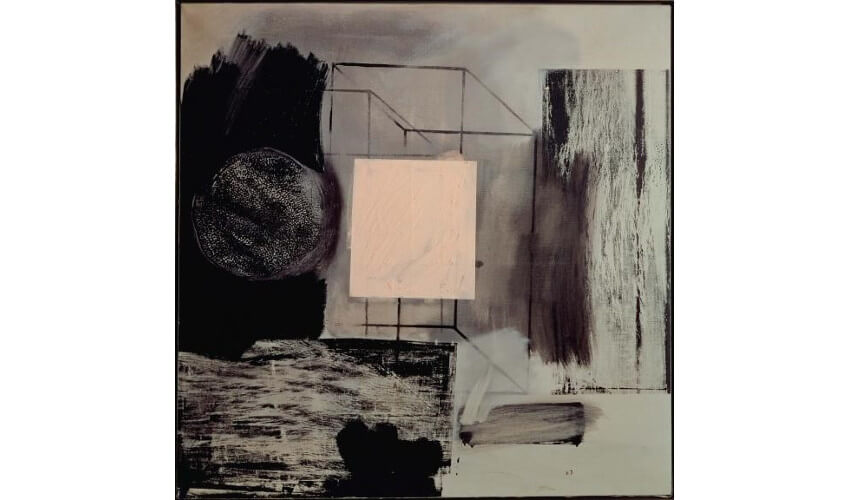
What Can be Considered Abstract in Robert Rauschenberg's Artwork
An abstraction is a starting point. It is the seed of an idea that could, under the right contemplative circumstances, circumstances that require openness in order to manifest, grow into a forest of thought. The short answer, therefore, to the question of whether Robert Rauschenberg artwork can be considered abstract, is yes. Everything about it can be read as abstract. Every element of every artwork Rauschenberg made over the 60+-year span of his professional career was intended as an instigator of thought. We have as proof the words of the artist in numerable interviews, in which he pointed out repeatedly the importance of the role of the individual viewer in establishing the meaning of his experiments. And as a further, decisive demonstration of the abstract nature of his oeuvre, we have the Robert Rauschenberg retrospective that opened 1 December 2016 at the Tate Modern in London. It is the first comprehensive exhibition of his work since the death of the artist in 2008, and it includes more than 200 artworks spanning the full timeline of his career and the full range of media with which he experimented. The exhibition will next travel to San Francisco for a stay at SFMoMA, and then to MoMA in New York. The works in its catalogue offer a chance to fully contemplate the life and work of an artist who above all else hoped to convince us to look closely at our world and our time, and to determine its meaning for ourselves.
Art of His Time
The aforementioned Robert Rauschenberg retrospective currently on view at the Tate Modern presents the work of Robert Rauschenberg in sequential order, according to the year it was made. This was a decision not made for reasons of simplicity. Time is an essential element in everything Rauschenberg made. At every step of his career Rauschenberg was an artist of his moment. Not that he simply made work about his time. Rather his work was a byproduct of his time. It manifested through his interaction with the culture of the present and emerged as a definition of the now.
The first body of work Rauschenberg made that boldly and accurately defined the now was a series of large-scale monochrome paintings he painted in various colors, including white, black, red and gold. It was the early 1950s and he was immersed in the New York art scene, which was dominated by Abstract Expressionism. Rauschenberg was a friend to many of the Ab Ex painters. He drank with them, drove them home when they drank too much, and shared in their daily conversations about art and life. His monochromes were the inevitable result of their drama. They demonstrate, albeit abstractly, the simple value inherent in doing something completely different than what everyone else is doing.
 Robert Rauschenberg - Untitled (mate black monochrome, triptych), 1951, Oil on canvas, 72 x 108 in. © Robert Rauschenberg Foundation
Robert Rauschenberg - Untitled (mate black monochrome, triptych), 1951, Oil on canvas, 72 x 108 in. © Robert Rauschenberg Foundation
Combined Forces
After making his name with his monochromes, Robert Rauschenberg began his first Combines, assemblages of real-world detritus that inhabit a middle ground between various traditional artistic forms. They are part painting, part sculpture, part readymade, and part collage. They announced the already prevalent, inevitable conclusion that traditional formal classifications had become irrelevant and that all art could be a total art.
Whereas Abstract Expressionism had been steeped in the individual emotions of the artists themselves, the Combines Rauschenberg made were an expression of the entire culture. They were made of news clippings, garbage, found objects, curiosities, scrap wood, and of course paint. They are an exact, representational image of the world, as it existed on the days they were made. They simultaneously express the sum total of human society while extending an open invitation to contemplate its nature and values.
 Robert Rauschenberg - Odalisk, 1955 – 1958, oil, watercolor, pencil, crayon, paper, fabric, photographs, printed reproductions, miniature blueprint, newspaper, metal, glass, dried grass, and steel wool with pillow, wood post, electric lights, and rooster on wood structure mounted on four casters. © Robert Rauschenberg Foundation
Robert Rauschenberg - Odalisk, 1955 – 1958, oil, watercolor, pencil, crayon, paper, fabric, photographs, printed reproductions, miniature blueprint, newspaper, metal, glass, dried grass, and steel wool with pillow, wood post, electric lights, and rooster on wood structure mounted on four casters. © Robert Rauschenberg Foundation
A World of Images
Even though it was his contemporary Andy Warhol who became more famous for the practice, it was Robert Rauschenberg who pioneered the use of the industrial silkscreen process to create paintings that incorporate photographs taken from contemporary culture, as the current Tate retrospective makes clear. The iconic Retroactive II, a Rauschenberg silkscreen that features a prominent image of John F. Kennedy alongside an image of an astronaut, a weather gauge, a Polaroid of a glass of water the artist took, and several other images, seems to be held in particular esteem by the Tate, since it was used on all of its advertising materials, including the catalogue cover.
In addition to silkscreen, Rauschenberg also utilized a variety of other printing processes, such as lithograph, throughout his career. Some of his prints (Retroactive II in particular) read like a diary entry, as if to simply say, “this is what I am thinking about today, though I do not know what it means.” Others, like Earth Day, a lithograph from 1970, read more like propaganda, expressing an on-the-nose social activist stance. Still others, like Renascence, a silkscreen from 1962, appear to be totally abstract. Regardless of their apparent content, Rauschenberg’s prints demonstrate the overarching intention Rauschenberg always had, which was to express his time. As he said, “I always wanted my works—whatever happened in the studio—to look more like what was going on outside the window. The artist's job is to be a witness to his time in history.”
 Robert Rauschenberg - Renascence, 1962, Oil and silkscreen ink on canvas. © Robert Rauschenberg Foundation
Robert Rauschenberg - Renascence, 1962, Oil and silkscreen ink on canvas. © Robert Rauschenberg Foundation
The World is a Stage
In addition to his studio work, Robert Rauschenberg was also an active collaborator in the world of performance. Throughout his career, he created stage props, backdrops and costumes for a variety of theater and dance productions. He even occasionally acted in some of these productions. One of his most famous pieces, a combine from 1954 titled Minutiae, was created as a stage piece for a Merce Cunningham ballet. (A film of the ballet is presented at the Tate retrospective.)
The way they specifically interact with a larger artwork makes his performance-related works stand out from his other efforts. Their conceptual framework gives us an enlarged context from which to interpret them. If we consider Minutiae purely as an abstract art object, we may arrive at any number of personal interpretations based on our individual relationship with its form and its various aesthetic elements. But as one element of a ballet we may remove ourselves from the responsibility of personal interpretation and see it simply as decoration or a statement about the narrative unfolding on stage. It is tempting, in fact, to wonder what additional abstractions could be garnered by reading all the work Rauschenberg made as decoration or props rather than art.
 Robert Rauschenberg - Minutiae, 1954, oil, paper, fabric, newspaper, wood, metal, and plastic with mirror on braided wire on wood structure. © Robert Rauschenberg Foundation
Robert Rauschenberg - Minutiae, 1954, oil, paper, fabric, newspaper, wood, metal, and plastic with mirror on braided wire on wood structure. © Robert Rauschenberg Foundation
What Is Not Shown
Although his monochromes, Combines, prints, and stage designs are what Robert Rauschenberg is best known for, his prolific creativity manifested in other media as well. As is the case with many famous artists, if the financial interests of the market do not hold a certain body of work in high enough esteem it sometimes fails to be discussed in the larger context of their oeuvre. The current Tate exhibition helps viewers escape that myopic view by offering a welcome glimpse of many of the early efforts Rauschenberg made that predate those monochrome paintings that first made his name. For example, on view is a beautiful example of his haunting exposed blueprint monoprints. The exhibition also focuses due attention on his efforts outside of the studio, offering a glimpse at some of the archival relics of his charitable work, exemplified by the non-profit Rauschenberg Foundation.
In his private life Robert Rauschenberg was a realist. Though he had the mind of philosopher he was also renowned for his passion, friendliness, generosity, and sense of humor. And he at times showed all of those things in his work. There were realistic, passionate, friendly and humorous elements in each of Rauschenberg’s experiments, as he unabashedly attempted to show his generation their world. What are happily not shown in the current Tate retrospective are conclusive answers regarding the meaning of his many experiments. The most obviously abstract element of the legacy Rauschenberg created is that each of his artworks has a potentially infinite number of meanings, limited only by the individual imagination of each viewer. As Rauschenberg said, “I would like to make a painting and a situation that leaves as much space for the person looking at it as for the artist.”
Featured image: Robert Rauschenberg - Charlene (detail), 1954, oil, charcoal, paper, fabric, newspaper, wood, plastic, mirror, and metal on four Homasote panels, mounted on wood with electric light. © Robert Rauschenberg Foundation
All images used for illustrative purposes only
By Phillip Barcio






